| Date | Title | Speaker | Synopsis |
|---|---|---|---|
| 2024 | |||
| 22 May 2024 | The Anatomy of a Masterpiece: Manet's A Bar at the Folies-Bergère | Steven Barrett | 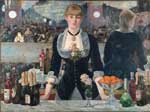 One of the seminal images of the later nineteenth century, Manet's A Bar at the Folies-Bergère (1882) shocked and intrigued audiences when first exhibited in Paris. It continues to beguile and bemuse those who see it today at The Courtauld Gallery, where it presides over a world-class collection of Impressionist art. Manet worked tirelessly on this, his final great work, struggling through pain and fatigue: he died shortly after completing it. What exactly did he paint? What are we looking at? We are standing before a bar at the Folies-Bergère, one of the popular theatres of Paris, looking directly at the barmaid. She stares back at us, blankly. However, everything is not as it seems: behind the barmaid space apparently dissolves, there is another bar and barmaid and even a male customer echoing ourselves! This lecture unpicks Manet's most brilliant painting and explains why it has proved so popular and influential. One of the seminal images of the later nineteenth century, Manet's A Bar at the Folies-Bergère (1882) shocked and intrigued audiences when first exhibited in Paris. It continues to beguile and bemuse those who see it today at The Courtauld Gallery, where it presides over a world-class collection of Impressionist art. Manet worked tirelessly on this, his final great work, struggling through pain and fatigue: he died shortly after completing it. What exactly did he paint? What are we looking at? We are standing before a bar at the Folies-Bergère, one of the popular theatres of Paris, looking directly at the barmaid. She stares back at us, blankly. However, everything is not as it seems: behind the barmaid space apparently dissolves, there is another bar and barmaid and even a male customer echoing ourselves! This lecture unpicks Manet's most brilliant painting and explains why it has proved so popular and influential. |
| 26 Jun 2024 | Roman Ingenuity and Engineering | John Sherlock | 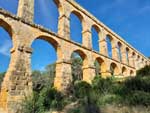 How the Roman period built on Greek heritage, introduced new architectural orders, and learned how to span great voids with arches, domes, brick and concrete. (Period 100 BC - 300 AD, with neo-classical cross references). How the Roman period built on Greek heritage, introduced new architectural orders, and learned how to span great voids with arches, domes, brick and concrete. (Period 100 BC - 300 AD, with neo-classical cross references).In this richly illustrated lecture John picks out the major innovations in architecture that the ancient Romans introduced. He discusses what they themselves inherited from ancient Greece, and then shows how they added new patterns (or 'orders'), new structures, new materials and new building techniques. He spends some time looking at the engineering issues in arches, vaults and domes, and then closes with some reflections on how all this influenced later generations, including our own. At all John's lectures he gives out a timeline of European architectural development to the present day, which can be useful in setting the context of the particular period under discussion. |
| 18 September 2024 | No, dear, that's not funny: cartoonists on cartooning | Harry Venning | 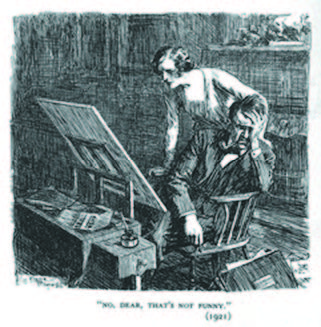 Escorting us through the peaks and pitfalls of his profession, Venning provides visual and verbal contributions from such luminaries as Matt Groening, Dr Seuss, Charles M Schulz and Gary Larson. Entertaining and informative, topics include rejection; procrastination; deadlines; AI; professional envy; censorship; and the cartoon community's response to the Charlie Hebdo murders. Venning will draw live on an AI flip chart, the images projected onto the screen. Escorting us through the peaks and pitfalls of his profession, Venning provides visual and verbal contributions from such luminaries as Matt Groening, Dr Seuss, Charles M Schulz and Gary Larson. Entertaining and informative, topics include rejection; procrastination; deadlines; AI; professional envy; censorship; and the cartoon community's response to the Charlie Hebdo murders. Venning will draw live on an AI flip chart, the images projected onto the screen. |
| 23 October 2024 | Surviving opera: behind the scenes at the ROH | Sarah Lenton | 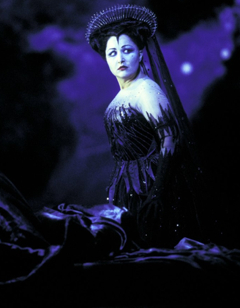 This lecture unpacks some of the idiosyncrasies of opera - the huge voices, big gestures and bizarre plots - and offers a way through the labyrinth. All her professional life Sarah Lenton has worked with opera, backstage and front of house. Her talk covers everything from the singers, costumes, trap doors, sound effects - to the people in the pit, in the wings and up in the gods working the spotlights. This lecture unpacks some of the idiosyncrasies of opera - the huge voices, big gestures and bizarre plots - and offers a way through the labyrinth. All her professional life Sarah Lenton has worked with opera, backstage and front of house. Her talk covers everything from the singers, costumes, trap doors, sound effects - to the people in the pit, in the wings and up in the gods working the spotlights. |
| 20 November 2024 | Dora Carrington (1893-1932): the tragic muse of Bloomsbury | Alan Read | 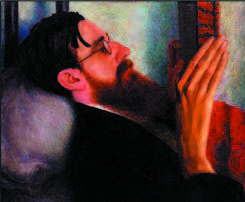 Fascinating as much for her life as her art, Carrington formed one corner of a typically Bloomsbury triangular relationship. Studying at the Slade from 1910, one of an extraordinary generation of modern British artists, her student work showed promise when it was unusual for a woman to succeed as a professional artist. The lecture will consider both her unconventional life, including her relationship with Lytton Strachey, and her paintings; a talent that has, perhaps, been overwhelmed by her biography. Fascinating as much for her life as her art, Carrington formed one corner of a typically Bloomsbury triangular relationship. Studying at the Slade from 1910, one of an extraordinary generation of modern British artists, her student work showed promise when it was unusual for a woman to succeed as a professional artist. The lecture will consider both her unconventional life, including her relationship with Lytton Strachey, and her paintings; a talent that has, perhaps, been overwhelmed by her biography. |
| 2025 | |||
| 15 January 2025 | Tinker, tailor, canvas, chair: how modernism became a secret weapon | James Vaux | 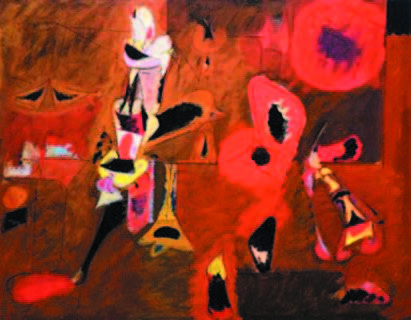 This is one of the strangest tales in art history. Is it true that the CIA used Abstract Expressionism as a secret weapon against the USSR in the Cold War? Would Pollock and Rothko be forgotten today were it not for this subterfuge? And how did American design nearly cause Nixon and Khrushchev to come to blows… in a kitchen? This is one of the strangest tales in art history. Is it true that the CIA used Abstract Expressionism as a secret weapon against the USSR in the Cold War? Would Pollock and Rothko be forgotten today were it not for this subterfuge? And how did American design nearly cause Nixon and Khrushchev to come to blows… in a kitchen? |
| 19 February 2025 | The Great Exhibition: its roots, success and legacy | Dr Prasannajit de Silva | 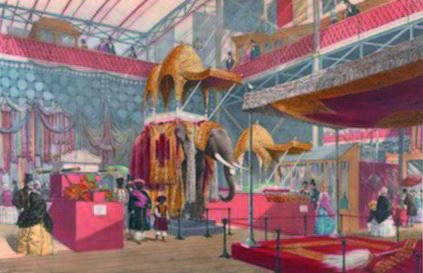 Often regarded as a grand statement of Victorian technological prowess and self-confidence, the Exhibition grew out of a widespread concern about the state of British industrial design. What were the real aims of the Exhibition, and how were they fulfilled? What concerns did such a radical event raise for Victorian society? What was it like for visitors? Why was it such a huge success and what was its lasting impact? Often regarded as a grand statement of Victorian technological prowess and self-confidence, the Exhibition grew out of a widespread concern about the state of British industrial design. What were the real aims of the Exhibition, and how were they fulfilled? What concerns did such a radical event raise for Victorian society? What was it like for visitors? Why was it such a huge success and what was its lasting impact? |
| 19 March 2025 | Danish modernism: the Skagen artists | Dr Caroline Levisse |  From the 1870s to the beginning of the 20th century, Skagen, the northernmost fishing village on the Jutland peninsula, Denmark, was home to an artists' colony. Some of its more famous members included Anna and Michael Ancher, Marie and Peder Severin Krer, and Laurits Tuxen. Reacting against styles enforced by the Academies and instead influenced by French modernism, they painted en plein air, representing scenes from ordinary life. From the 1870s to the beginning of the 20th century, Skagen, the northernmost fishing village on the Jutland peninsula, Denmark, was home to an artists' colony. Some of its more famous members included Anna and Michael Ancher, Marie and Peder Severin Krer, and Laurits Tuxen. Reacting against styles enforced by the Academies and instead influenced by French modernism, they painted en plein air, representing scenes from ordinary life. |
| 16 April 2025 | Margaret Calvert: the woman who showed us where to go! | Mark Ovenden | 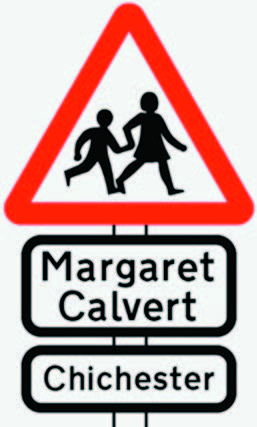 From the early 1960s while still a student at Chelsea Art College, Margaret Calvert worked with her graphic design tutor, Jock Kinneir. Together they designed the road sign system, from the typefaces and shapes to the colours. They created the 'look' of British Rail, and their signage was used in every hospital and NHS building. Their collaborative output transformed the entire face of modern Britain and was copied worldwide. From the early 1960s while still a student at Chelsea Art College, Margaret Calvert worked with her graphic design tutor, Jock Kinneir. Together they designed the road sign system, from the typefaces and shapes to the colours. They created the 'look' of British Rail, and their signage was used in every hospital and NHS building. Their collaborative output transformed the entire face of modern Britain and was copied worldwide. |
| 21 May 2025 | Treasures of the Silk Road: the art of Asia and beyond! | Christopher Bradley |  From China through Central Asia to the Mediterranean, 8,000kms of the Silk Road was a highway for beliefs, ideas, inventions and art, while silk was just one of many valuable commodities traded for 1,400 years. With the Greek invasion by Alexander the Great, early Persian routes spread east towards India. Chinese stability finally enabled the trade of silk, jade and ceramics, in exchange for horses, pearls and gold. From China through Central Asia to the Mediterranean, 8,000kms of the Silk Road was a highway for beliefs, ideas, inventions and art, while silk was just one of many valuable commodities traded for 1,400 years. With the Greek invasion by Alexander the Great, early Persian routes spread east towards India. Chinese stability finally enabled the trade of silk, jade and ceramics, in exchange for horses, pearls and gold. |
| 21 June 2025 | The Road to Sitges: Lee Miller, Roland Penrose and Picasso | Antony Penrose |  This journey began in pre-war Paris ending in effect in Sitges, near Barcelona in the 1970s. It tells of the intimate friendship of Miller, Penrose and Picasso, their involvement in the Spanish Civil War and WW2, as well as their rich, cultural collaboration. Art was for them a way of life, filled with political and moral significance; they shared love, passion and loyalties that never died. This journey began in pre-war Paris ending in effect in Sitges, near Barcelona in the 1970s. It tells of the intimate friendship of Miller, Penrose and Picasso, their involvement in the Spanish Civil War and WW2, as well as their rich, cultural collaboration. Art was for them a way of life, filled with political and moral significance; they shared love, passion and loyalties that never died. (Credit: Roland Penrose and Lee Miller, Stiges Spain 1972 c Courtesy Lee Miller Archives, England 2025. All rights reserved) |
| Previous Lectures |